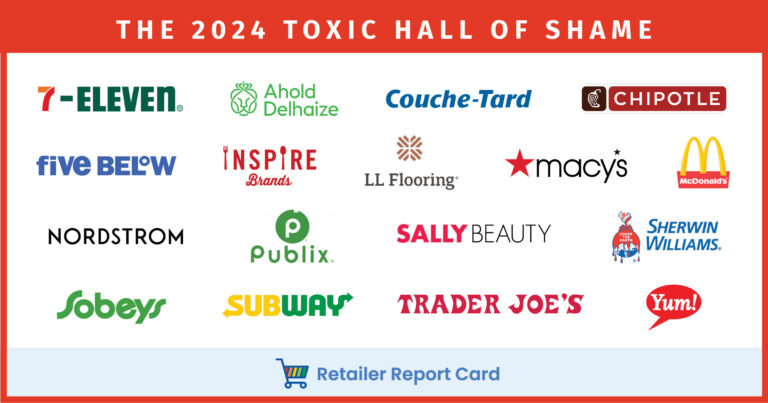Toxic Flame Retardants in Recycled Plastics
From e-waste to living space: flame retardants contaminating household items add to concern about plastic recycling
Update: A correction to this study was published in the journal on December 15, 2024. MORE.
Toxic flame retardants, linked to cancer and endocrine disruption, are showing up where they’re not expected: in black plastic household products including a takeout sushi tray, spatulas and other kitchen utensils, as well as costume beads, travel games, and other toys.
We’ve come to expect plastics in nearly every kind of product, from toys and food packaging to building materials and apparel, and we know that many plastics contain toxic ingredients. This peer-reviewed study led by Toxic-Free Future found that some toxic chemicals are entering plastic products through the back door—via contaminated recycled plastic.
Our researchers found flame retardants usually associated with electronics, such as chemicals used in television casings, in ordinary household products that don’t need flame retardancy. Their presence is likely due to use of plastics that come from electronic waste (e-waste) recycling. People are already exposed to flame retardants at home and work when these chemicals escape the electronics they’re used in, but these new detections of flame retardants indicate we may be exposed in other ways as well.


What is the truth about recycling?
When it comes to plastic, it’s now abundantly clear that recycling can’t turn plastic into a safe and sustainable material. The only real solution is to reduce our reliance on plastic by moving to safer and reusable materials.

Essential Elements for a Toxic-Free Future
![]()
Transparency
The study found that large retailers had no more success than small retailers in keeping these toxic flame retardants out of household items they sell. The complete lack of information on ingredients and contaminants in this kind of product makes it very difficult for retailers to avoid this type of contamination. Requiring manufacturers to provide full transparency on ingredients and contaminants in their products would help retailers as well as manufacturers sell and make safer products.
Ban the bad
Toxic flame retardants are present in household items where they are not intentionally used because companies use these toxic chemicals in electronics. Plastics known for use in electronics (ABS and HIPS) were found to contain significantly higher levels of flame retardants than plastics not associated with electronics (e.g. polypropylene and polyamide nylon). Company and government policies that stop the use of toxic chemicals in products and ban the most harmful plastics would prevent this problem.
Safer solutions
We see dirty recycling and contamination of household products with toxic chemicals because companies that make electronics and other products are overly reliant on plastic and toxic plastic additives. Commitment by companies and support from governments can move manufacturers toward safer solutions that do not rely on plastic and toxic plastic additives.













